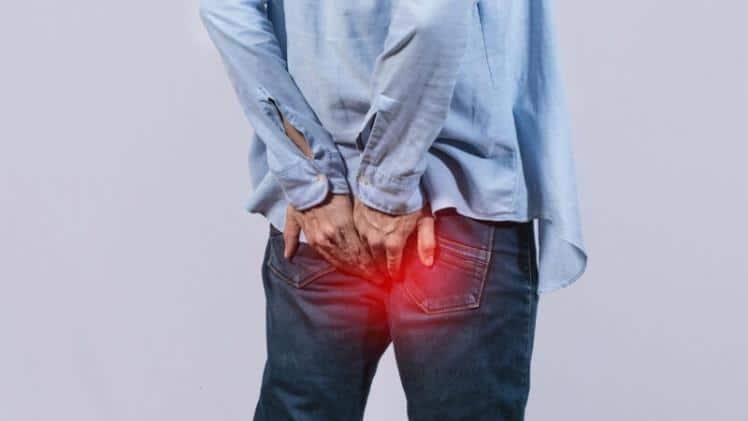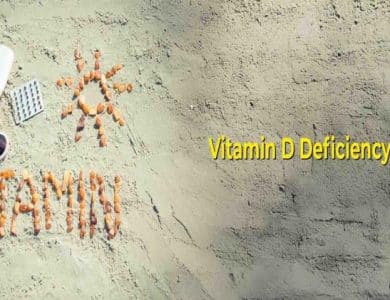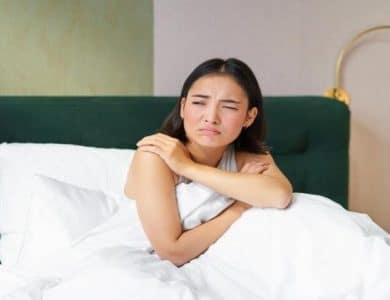The #1 Mistake People Make When Treating Anal Pain at Home

Introduction
Anal pain is a common yet often overlooked issue that affects people of all ages. It can show up as a sharp sting, a burning sensation, or a deep ache—making daily life uncomfortable or even unbearable. While some cases are mild and go away on their own, others may persist, signaling conditions like anal fissures, hemorrhoids, or inflammation in the rectal area.
Many people turn to over-the-counter solutions to manage the pain. One popular option is lignocaine gel, a local anesthetic that helps numb the area and provide fast relief. However, even though lignocaine products are widely used, they are often applied incorrectly—which can reduce their effectiveness or even lead to side effects.
Why does this happen? Often, it’s due to poor instructions, lack of awareness, or simply misunderstanding how the gel works. That’s why this article aims to provide a clear, practical guide on how to use lignocaine gel properly for anal pain. From understanding how the gel works to knowing when and how to apply it, this guide will walk you through every essential step.
We’ll also talk about an important addition to your care routine—Fitolium, a specially designed supplement that targets internal causes of hemorrhoid-related discomfort. When combined with topical relief like lignocaine gel, it helps deliver both short-term comfort and long-term results.
The bottom line? Correct application is the key to safe and effective relief. This guide will help you get the most out of your treatment and support your healing process the right way.
What Is Lignocaine Gel and How It Works
Lignocaine (also known as lidocaine) is a widely used local anesthetic. It works by temporarily blocking the nerves in a specific area from sending pain signals to the brain. When applied to the skin or mucous membrane, lignocaine numbs the region and provides quick pain relief.
In gel form, lignocaine is especially useful for sensitive areas like the anal region. It is often used to treat:
- Anal fissures – small tears in the lining of the anal canal that cause sharp pain during bowel movements
- Hemorrhoids – swollen veins in the rectum or anus that can cause itching, burning, or bleeding
- Rectal irritation or inflammation – due to constipation, prolonged sitting, or minor injuries
Lignocaine gel offers rapid relief, typically within minutes. It can be applied externally around the anus or internally if the formulation is designed for rectal use. Always check the product label to ensure it is safe for internal application before doing so.
There are several different forms of lignocaine available, including:
- Gels and creams – commonly used for external application
- Rectal suppositories – solid forms inserted into the rectum
- Lidocaine wipes or pads – often used for quick, on-the-go relief
Each form has its own advantages, but gels are often preferred for anal pain because they are easy to apply and spread evenly. They also start working quickly, making them ideal for acute discomfort.
It’s important to remember that lignocaine gel only treats the symptom—pain—and not the underlying condition. For lasting results, a combination of treatment approaches may be needed, which we will explore in later sections.
When to Use Lignocaine Gel
Not every type of anal discomfort needs lignocaine gel, but in many cases, it can offer fast and targeted relief. Knowing when it’s appropriate to use lignocaine is just as important as knowing how to apply it.
Signs You Might Need It
You may consider using lignocaine gel if you experience any of the following:
- Sharp pain during or after bowel movements, often caused by anal fissures
- Persistent itching or burning around the anal area
- Soreness or tenderness due to mild external hemorrhoids
- Postpartum anal discomfort, especially after difficult delivery
- Painful spasms in the anal muscles due to tension or irritation
These symptoms may be caused by hemorrhoids, small tears, or irritation from frequent wiping or poor hygiene. In these cases, a local anesthetic like lignocaine gel can help reduce discomfort and allow the area to heal more comfortably.
How to Know It’s Not the Right Time
Lignocaine gel is not a cure-all. If you notice any of the following symptoms, it’s best to see a doctor before using any topical treatment:
- Heavy bleeding from the rectum
- Unexplained lumps or swelling inside the anus
- Severe or spreading pain
- Signs of infection like pus or fever
In these cases, the pain could be linked to a more serious condition such as an abscess, thrombosed hemorrhoid, or infection. Using lignocaine might mask the pain and delay proper treatment.
Not for Long-Term Use
While lignocaine gel is helpful for short-term relief, it should not be used continuously for long periods. Overuse can cause sensitivity or reduce the gel’s effectiveness. If symptoms persist for more than a few days, it’s important to seek medical advice to address the root cause rather than just manage the pain.
Coming up next, we’ll walk you through how to apply lignocaine gel correctly to ensure it works safely and effectively.
Step-by-Step Instructions on How to Apply Lignocaine Gel
Using lignocaine gel the right way makes a big difference in how well it works. Follow this step-by-step guide to apply the gel safely and effectively, whether you’re dealing with external or internal anal pain.
Step 1: Prepare the Area
- Wash your hands thoroughly with soap and warm water.
- Gently clean the anal area with warm water. Avoid soap, as it may cause irritation.
- Pat the area dry with a clean towel—do not rub.
- If possible, wear medical gloves to avoid direct contact and contamination.
Cleanliness reduces the risk of infection and allows the medicine to work better.
Step 2: Check the Product Label
Make sure your product is labeled for rectal or anal use. If using a product with a built-in applicator, follow the specific instructions provided in the box. If you’re unsure, contact a healthcare provider or pharmacist.
Step 3: Apply the Gel
| Application Type | Instructions |
|---|---|
| External | Apply a small amount of gel (about a pea-sized drop) to the clean skin around the anus. Gently spread it without pressing too hard. Wait until fully absorbed before dressing. |
| Internal | If the product allows for internal use, insert the recommended amount (usually 2–3 grams) using an applicator or gloved finger. Apply gently to avoid injury. |
Step 4: Wash Hands Again
After applying the gel, wash your hands thoroughly to avoid getting the medicine in your eyes or mouth. Clean the applicator, if used, according to the instructions.
Step 5: Frequency of Use
- Usually, lignocaine gel can be applied up to 3–4 times a day.
- Do not exceed the maximum dosage listed on the label.
- Apply it after bowel movements and before bedtime for best results.
What If It Burns or Stings?
If you feel mild stinging after application, it should go away quickly. However, if the discomfort worsens, or you notice a rash, swelling, or other allergic reactions, stop using the product and seek medical help.
Used correctly, lignocaine gel can offer fast relief and reduce the discomfort that interferes with your day. Next, we’ll discuss common mistakes to avoid so your treatment stays safe and effective.
Common Mistakes to Avoid
Even though lignocaine gel is easy to use, mistakes in application or usage can reduce its effectiveness—or worse, cause irritation and other problems. Here are the most common mistakes people make and how to avoid them.
1. Using It Without a Clear Reason
Don’t apply lignocaine gel just because there’s mild discomfort. Use it only when there are real symptoms such as Anal Pain, itching, or burning. For example, occasional dryness might be solved with a moisturizing ointment instead.
2. Applying Too Much
More gel doesn’t mean more relief. In fact, overapplying can lead to numbness in areas that don’t need it, or cause skin irritation. Always follow the amount recommended on the package or by your doctor.
3. Mixing It With Other Products
Avoid using lignocaine gel with other creams or medications unless a healthcare provider approves it. Combining multiple products may cause chemical interactions, skin sensitivity, or delay healing.
4. Applying to Open or Bleeding Wounds
Do not use lignocaine gel on deep cuts or actively bleeding hemorrhoids. The medication is not designed for open wounds and may cause burning or get absorbed too quickly into the bloodstream, leading to unwanted effects.
5. Using It Too Often or Too Long
Lignocaine is meant for short-term relief. Using it daily for weeks without medical advice can lead to desensitization, irritation, or allergic reactions. If Anal Pain lasts more than a few days, it’s time to see a doctor.
Now that you know what not to do, let’s talk about possible side effects and safety rules that every user should understand before starting treatment.
Possible Side Effects and Safety Precautions
Like all medications, lignocaine gel can cause side effects—especially if not used as directed. Fortunately, most people tolerate it well when following the instructions. Below are the key safety considerations to help you avoid any unwanted reactions.
Common Side Effects
- Mild burning or stinging right after application
- Redness or swelling of the skin around the anus
- Dryness or irritation with repeated use
These effects are usually temporary and go away within a few minutes. However, if they persist or get worse, you should stop using the gel and consult a doctor.
Allergic Reactions
Although rare, some people may have an allergic response to lignocaine. Be on the lookout for:
- Rash or itching that spreads beyond the treated area
- Trouble breathing or swelling of the face, lips, or tongue
Seek emergency help immediately if any signs of a serious allergic reaction occur.
Who Should Not Use Lignocaine Gel?
- Children under 12 years, unless prescribed by a doctor
- Pregnant or breastfeeding women—only under medical supervision
- People with known allergies to lignocaine or other local anesthetics
Storage and Shelf Life
- Keep the tube in a cool, dry place, away from direct sunlight
- Do not freeze the gel
- Check the expiration date before use. Expired products can lose effectiveness or become unsafe
Also, keep the gel out of reach of children and never share it with others—even if they have similar symptoms.
Used properly, lignocaine gel is a safe and effective tool for short-term Anal Pain relief. But for deeper healing and long-term comfort, it helps to address the root of the problem. Let’s look at how Fitolium can play a role in that.
How Fitolium Complements the Effect of Lignocaine Gel
While lignocaine gel offers fast, targeted relief from anal pain, it only treats the surface symptoms. It doesn’t address the deeper causes—like inflammation, poor digestion, or weakened blood vessels. That’s where Fitolium comes in.
What Is Fitolium?
Fitolium is a natural supplement developed specifically to support individuals dealing with hemorrhoids, anal irritation, and related digestive discomfort. Launched on April 19, 2024, it contains a unique blend of herbal and probiotic ingredients aimed at healing from the inside out.
Main Benefits of Fitolium:
- Reduces inflammation inside the rectum and intestines
- Soothes itching, burning, and swelling
- Supports healing of anal fissures and hemorrhoidal tissue
- Improves bowel movement regularity to avoid further irritation
How It Works
The formula includes:
- Lactobacillus acidophilus and Bifidobacterium bifidum – promote gut health and reduce strain during bowel movements
- Terminalia chebula and Embellica officinale – known for anti-inflammatory and wound-healing properties
- Silicon Dioxide & Magnesium Stearate – support absorption and stability
These ingredients work together to reduce the root causes of anal pain—not just mask the symptoms. Unlike lignocaine gel, which is applied directly to the skin, Fitolium helps improve digestion, strengthen blood vessels, and support overall recovery from within.
Dosage and Usage
Take one capsule in the morning and one in the evening after meals. Store the product in a cool, dry place below 25°C. Never exceed the recommended dosage. Fitolium is not suitable for children or pregnant women, and should not be used as a replacement for a balanced diet.
Why Combine It with Lignocaine Gel?
Lignocaine offers immediate relief, while Fitolium works over time to heal and prevent future flare-ups. Using both together gives you short-term comfort and long-term results. For example, you can apply the gel after a painful bowel movement, and take Fitolium daily to restore balance inside your body.
This two-level approach—topical and internal—gives you a more complete strategy for overcoming anal pain and discomfort.
Alternative Treatment Options
In addition to using lignocaine gel and supplements like Fitolium, there are several natural and lifestyle-based methods that can help reduce anal pain and prevent future issues. These treatments focus on improving hygiene, reducing strain, and supporting overall digestive health.
1. Diet and Hydration
- Eat more fiber: Include whole grains, fruits, vegetables, and legumes to soften stool and make bowel movements easier.
- Stay hydrated: Drinking 6–8 glasses of water daily helps keep stools soft and reduces the risk of constipation.
Fiber and hydration are key to preventing the pressure and friction that cause pain in the anal area.
2. Sitz Baths
A sitz bath is a shallow, warm bath that you sit in for 10–15 minutes, especially after bowel movements. It soothes inflammation, improves blood flow, and helps with healing. Doing this 2–3 times a day can be extremely helpful.
3. Gentle Hygiene Practices
- Avoid using dry toilet paper; try unscented wet wipes or rinse with water instead.
- Pat dry instead of rubbing the area after cleaning.
4. Physical Activity
Regular exercise like walking or stretching improves digestion and reduces the risk of constipation, which is a major trigger for anal discomfort. Avoid sitting for too long—take breaks to move around if you work at a desk.
While these options may not replace medical treatment, they form an essential part of everyday care and prevention. Combined with the right products, they can significantly improve your comfort and quality of life.
Conclusion
Anal pain can be disruptive, embarrassing, and hard to talk about—but it’s more common than most people realize. The good news is that with the right approach, it can be managed effectively and safely.
Lignocaine gel offers fast, localized relief by numbing the affected area. When applied correctly, it can ease the discomfort of hemorrhoids, anal fissures, and inflammation within minutes. But it’s important to use it carefully—follow the instructions, avoid common mistakes, and be aware of possible side effects.
For deeper, long-term support, Fitolium provides a powerful addition to your routine. Its natural ingredients work from within to reduce inflammation, support digestive health, and promote healing—addressing the root causes of anal pain rather than just masking the symptoms.
Don’t forget the basics: eat fiber-rich foods, stay hydrated, keep the area clean, and stay physically active. These everyday choices make a big difference in preventing discomfort from returning.
In short: combine external relief with internal support. Use lignocaine gel for immediate comfort, and Fitolium to build long-term resistance against Anal Pain and irritation. Take care of your body now—so you can sit, walk, and live pain-free again.




